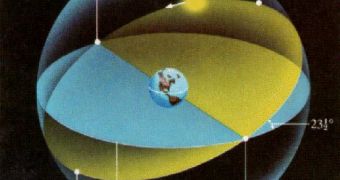Tomorrow we will have the longest daylight in the Northern Hemisphere, marking the beginning of the astronomic summer, at 2:06 p.m. EDT (11:06 a.m. PDT). The summer solstice points to the moment when the sun reaches the spot where it's furthest north of the equator; instead, in the Southern Hemisphere, this marks the beginning of winter.
At solstice, the sun seems to be shining directly overhead for a location on the Tropic of Cancer (latitude 23.5 degrees north), like the north of the Yucatan Peninsula. The seasons' shift occurs because the plane of Earth's equator is tilted 23.5 ? to the Earth's orbit around the sun. The tilts around the year change significantly the angle of incidence of the sun radiation and the length of daylight.
Now, the insolation is at its peak in the Northern Hemisphere. But as the weather's temperature is more than insolation, this is not the year's hottest day. The regional atmosphere keeps on storing more heat for over a month, linked to the latitude, opposed to the December's winter solstice. That's why the hottest time of the year is usually in late July and the coldest in late January. In a city like New York City or London, on April 12 the insolation has the same value as on August 31, but because of that seasonal lag, in April the temperatures can be freezing, while on August they can reach 90? F (32? C).
Tomorrow the same cities will see the sun at its highest point in the sky for 2007, at 72 degrees over the southern horizon. The daylight is now at its peak: over 15 hours. At the Arctic Circle (above 66.5? N) the sun will stay on the horizon 24-hours a day (the "midnight sun" effect).
But do not think that the Earth is now at its closest location to the sun. On the contrary: on July 6th at 8:00 p.m. EDT, the Earth will reach aphelion, its farthest point from the sun in its orbit, at about 94.5 million miles. On January 3rd, Earth stood at perihelion, its closest location to the sun.
The perihelion-ahelion difference is approximately 3.1 million miles (3.3 %), inducing a difference in received sun heat by the Earth of about 7 %. Such a difference should warm the winters and cool the summers of the Northern Hemisphere. Still, the effect of the enormous land masses in the Northern Hemisphere leads to the opposite: colder winters and hotter summers.

 14 DAY TRIAL //
14 DAY TRIAL //